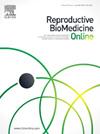THE DIFFERENCES BETWEEN OVARIAN RESERVE PARAMETERS: AGE, ESTROGEN LEVEL AND BIRTH RATES
IF 3.7
2区 医学
Q1 OBSTETRICS & GYNECOLOGY
引用次数: 0
Abstract
Objective
Reduced fertility is likely the result of low oocyte developmental competence and inadequate maternal environment to support pregnancy. The aim of IVF treatment is to obtain interpretable and improvable results on the effects of parameters affecting fertility on pregnancy. Clinical information including female age (22-46), E2 levels on the day of opu and pregnancy status of 200 patients who came to Bahçeci Umut IVF Center for treatment between 2022-2023 were analyzed retrospectively (2022/20-05).
Materials and methods
Patient groups were determined as Control(NR), Polycystic Ovary Syndrome(PCOS), Advanced(DOR-I)and Early Age(DOR-G) low ovarian reserve.
Results
E2 was higher in PCOS (3421,29 ± 1998,92 pg/ml) than NR (1540,39 ± 462,63 pg/ml), DOR-I (719,65 ± 303,02 pg/ml), or DOR-G (940,70 ± 339,49 pg/ml). DOR-I and DOR-G had similar E2 (p>0.05, Table 1). DOR-I (40.36±3.082) was significantly older than other groups (p>0.05,Figure 1).
NR (%16) had the highest pregnancy loss rates compared to PCOS (%10), DOR-G (%14) and DOR-I (%8). PCOS (%36) had higher live birth rates than NR(%24), DOR-G(%22) and DOR-I(%16). DOR-G (%4) had higher biochemical pregnancy than PCOS(% 0) and DOR-I(%2) groups. The percentage of embryo transfer cancellation was higher in DOR-I (%30) than NR(%6) PCOS(%10) and DOR-G(%0).
Conclusions
Only DOR-I is is older than the NR group. E2 seems correlated with the number of oocytes collected and in the formation of indication groups. It confirms research findings that aging can lead to oocyte anomalies and infertility.
求助全文
约1分钟内获得全文
求助全文
来源期刊

Reproductive biomedicine online
医学-妇产科学
CiteScore
7.20
自引率
7.50%
发文量
391
审稿时长
50 days
期刊介绍:
Reproductive BioMedicine Online covers the formation, growth and differentiation of the human embryo. It is intended to bring to public attention new research on biological and clinical research on human reproduction and the human embryo including relevant studies on animals. It is published by a group of scientists and clinicians working in these fields of study. Its audience comprises researchers, clinicians, practitioners, academics and patients.
Context:
The period of human embryonic growth covered is between the formation of the primordial germ cells in the fetus until mid-pregnancy. High quality research on lower animals is included if it helps to clarify the human situation. Studies progressing to birth and later are published if they have a direct bearing on events in the earlier stages of pregnancy.
 求助内容:
求助内容: 应助结果提醒方式:
应助结果提醒方式:


